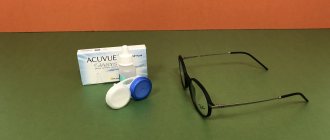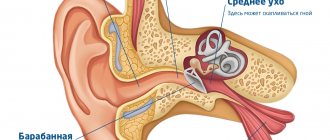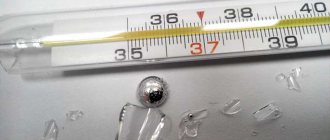Cracks on the feet are a partial violation of the integrity of the skin on the plantar part of the foot. They form more often on the heels; women are more susceptible to their occurrence. Deep cracks are unpleasant because they cause pain, take a long time to heal, and make walking and physical activity difficult. Like other injuries, they facilitate the penetration of pathogenic bacteria and fungi into the skin and are fraught with an infectious inflammatory process. Why do they arise?
Why are they formed?
Many people believe that only older people have cracks in their feet. Indeed, 25–30% of people over 40 have them. But they also occur in men, women younger than this age, and even in children.
The causes of cracks in the feet are a violation of the hydrolipid balance of the skin, a decrease in the production of collagen and elastin, and a decrease in the protective fat layer. Externally, this manifests itself in dryness, thickening, loss of elasticity, and firmness. Every day, the feet experience enormous pressure to support the body in a standing position, controlling balance when walking or running. With such a load, the skin inevitably stretches and expands. If it is dry and loses elasticity, then the likelihood of rupture when stretched under body weight will increase.
In addition to natural age-related changes, cracks in the skin of the feet are provoked by the following internal and external factors:
- wearing tight shoes;
- fungal infections, dermatitis;
- foot deformities, flat feet, heel spurs;
- poor hygiene, insufficient hydration or nutrition;
- skin contact with dry, hot air, salty sea or chlorinated pool water, ultraviolet rays;
- poor nutrition, leading to a deficiency of vitamins A, E, group B, and microelements important for skin health;
- endocrine disorders, including thyroid disease, diabetes;
- metabolic disorders;
- excess weight, which exposes the skin of the plantar part of the foot to excessive pressure and stretching;
- problems with blood circulation in the lower extremities, causing a lack of tissue nutrition;
- walking barefoot on hard surfaces (sand, stones, asphalt).
Cracks on the feet are a consequence of dry and thickened skin, or otherwise keratosis. Keratosis develops when keratinized or dead cells of the upper layer of skin do not have time to exfoliate and become layered on top of each other. In severe cases, the layer of thickened skin is 1–2 cm.
Classification
Depending on the characteristics of the disease, there are two types of cracks:
- Superficial (epidermal) - they develop within the epidermis and, healing, disappear without a trace.
- Deep (epidermal-dermal) - develop in the upper layers of the skin, localized in the epidermis and dermis. After the cracks have healed, scars may remain. Very often, deep formations cause pain and bleed. Bleeding formations are called ruptures.
What are the symptoms of cracked feet and heels?
In addition to the obvious symptom of large cracks surrounded by a thick layer of dry, cracked, flaky skin, cracks in the soles of the feet cause pain when walking. The pain is localized in the area of damage, has a burning character, and intensifies with pressure. Some experience psychological discomfort, since such wounds, especially if there are many of them, spoil the appearance of the feet.
Cracks in the heels vary in depth and length. They can be single or multiple, on one heel or simultaneously on both. Usually it all starts with the appearance of dryness, hardening, and thickening of the skin along the edge of the heel. These areas look like calluses and are yellow, dark brown, or gray-white in color. At first, small cracks are visible. But if they are not treated and you continue to put pressure on the heel, they will deepen and begin to bleed.
In diseases that lead to a decrease in blood flow to the feet, there is a high risk of infectious complications, inflammation, and the formation of long-term non-healing ulcers.
Which foot bath to choose?
The secret of the effectiveness of the baths lies in their natural composition, rich in magnesia and beneficial acids. The product is ideal for relieving fatigue and swelling, reducing inflammation, relieving pain after sports, moisturizing and nourishing the skin, preparing for a pedicure, as well as for people suffering from skin diseases. Epsom offers two foot baths that may interest you:
Foot bath “Foot Pleasure” with mint and lemon essential oil relaxes, relieves swelling and moisturizes the skin of the feet. A cooling bath will soothe discomfort and relieve swelling after sports or high heels, and the invigorating aroma of mint and lemon will instantly lift your spirits.
Epsom salt relaxes muscles, relieves pain and spasms. Salt removes excess fluid, quickly reducing swelling.
Sea salt relieves inflammation, promotes skin regeneration, healing of calluses and small wounds. Baths with sea salt reduce sweating and stop the development of nail fungus.
Lemon and mint essential oil restores tone to the legs, refreshes and relieves fatigue.
Tea tree essential oil has anti-inflammatory and antiseptic properties, improves blood circulation and fights fungus.
Sage essential oil soothes and heals damaged skin.
Macadamia oil nourishes and softens the skin, moisturizes the cuticle and takes care of the delicate skin of the feet.
Epsom Relax foot bath with chamomile and lavender essential oil nourishes the skin, relaxes muscles and relieves nervous tension. A warm evening bath with the aroma of lavender will give your feet lightness and comfort.
Epsom salts soothe muscles and relieve pain and spasms. Salt removes excess fluid, quickly reducing swelling.
Dead Sea salt relieves inflammation, reduces sweating, promotes the healing of small wounds, and effectively fights fungus.
Himalayan salt softens calluses and corns, accelerates skin regeneration, and tones.
Lavender essential oil soothes the skin and nervous system, helps you relax and fall asleep faster.
Tea tree essential oil has anti-inflammatory and antiseptic properties, improves blood circulation and fights fungus.
Chamomile extract relieves irritation and itching, soothes the skin after insect bites.
Macadamia oil nourishes and softens the skin, moisturizes the cuticle and takes care of the delicate skin of the feet.
How to treat cracked feet?
To restore the skin, comprehensive treatment by a podologist is necessary, including:
- finding out the cause of cracks in the feet;
- proper care;
- selection of softening, nourishing ointments, foot creams for cracks;
- foot baths, paraffin therapy;
- keratolytic agents for removing dead skin;
- hardware pedicure.
Often cracks in the feet are the result of problems within the body. For example, endocrine, vascular or nervous disorders, lack of vitamins and minerals. It is important to establish and, if possible, eliminate the causes of cracks in the feet at the beginning of treatment. This will make it easier to restore healthy skin structure and help prevent the formation of new breaks in the future. If cracks in your feet appear regularly, you need to check your health.
One of the main treatments is hardware pedicure.
This is a safe method that:
- removes keratinized areas without injury;
- will thin out the hard edges of cracks;
- will accelerate tissue regeneration;
- will make the skin softer and more elastic.
It is recommended to perform the procedure regularly, once every 3 to 4 weeks.
To treat cracks in the feet and soles of the feet, paraffin therapy and foot baths are used as auxiliary means. Paraffin creates a film on the surface of the skin that provides protection and hydration. Baths help soften rough skin, but the possibility of their use and composition should be discussed with a doctor, since they are not always permitted.
To care for the skin, nourishing, moisturizing, and healing creams for cracks in the feet are applied several times a day. There are reviews of such products from different companies on the Internet, but you need to choose them on the advice of a doctor. In difficult cases, it is recommended to buy ointments and creams for cracks in the feet with a healing, anti-inflammatory, antiseptic, and regenerating effect. For infection, antibacterial or antifungal therapy is used depending on the type of pathogen.
If the layer of rough, dry skin is too thick, spreading over large areas of the foot, products with retinoids and keratolytics are used. They remove dead skin particles and accelerate its renewal.
The composition of keratolytic ointments includes:
- urea;
- salicylic, lactic acid;
- alpha hydroxy acids;
- fruit acids.
With deep cracks, you need to temporarily limit walking and playing sports to reduce the pressure and friction that is exerted on the injured area. If it is not possible to limit physical activity, orthoses, instep supports, insoles or patches are used. They help redistribute the load and protect the problem area.
Treatment of heel cracks at the Belleza Clinic
Specialists from the Belleza clinic will help you effectively get rid of the problem of heel cracks. Only professional equipment is used here, and all the technicians have extensive experience in eliminating this problem. With the help of hardware medical pedicure and heel care individually selected by the clinic’s doctors, you will forget about cracks.
In addition to this problem, doctors solve other, more complex problems. For example, laser treatment of nail fungus. Contact the Belleza clinic in Kiev now, make an appointment at a time convenient for you and get advice and help from professionals.
How to warn?
If you have dry feet, the likelihood of cracks is high, so take care of their prevention.
What do we have to do?
- visit a podiatrist once a month for hardware treatment of the skin of the feet, removal of potentially dangerous areas - thickenings, corns, calluses where tears form;
- take care of a complete diet with sufficient vitamins and minerals;
- Every day after washing your feet before going to bed, apply moisturizing and nourishing creams to the skin of your feet;
- regularly massage your feet to improve blood circulation and metabolic processes;
- control weight;
- use special insoles, arch supports, orthopedic shoes if you have flat feet or other foot deformities;
- periodically treat feet with pumice stone and fine abrasive to remove dead cells.
If cracks appear, you should not try to eliminate them yourself, as this can worsen the situation and lead to complications. A competent approach is important here, which includes not only the treatment of cracks in the feet, but also an analysis of possible causes and recommendations for preventing relapse. If you encounter such a problem, contact a podiatrist. This is a specialist who specializes in treating diseases of the nails and skin of the feet.
10 1
Diet
Diet for skin diseases
- Efficacy: therapeutic effect after a month
- Time frame: three months or more
- Cost of products: 1400-1500 rubles per week
Nutrition is one of the important factors for skin health. Therefore, a lack of certain substances in the body, in particular vitamins A , E , etc., can lead to similar problems. To avoid them, the menu should include the following products:
- Fatty fish, liver, greens, carrots - to prevent vitamin A .
- Dairy products, nuts, cereals, eggs, vegetables, fruits - to provide sufficient amounts of B vitamins .
- Citrus fruits, sauerkraut, rosehip drinks are sources of vitamin C.
- buckthorn , seafood are sources of vitamin E.
- Bran, legumes - to provide the body with vitamin H.
Aspirin tincture
To treat cracked heels, prepare a tincture of aspirin tablets. For this:
- Grind 10 tablets of acetylsalicylic acid.
- Pour the resulting powder with a glass of vodka or alcohol.
- Place the container with the tincture in a dark place for 2 days;
The tincture is easy to use - just moisten gauze and apply to the area affected by cracks, wrap with film and leave overnight.
Use the compress 2-3 times a week.
Sea buckthorn mask
Sea buckthorn has a healing, antimicrobial and anti-inflammatory effect. A mask using this berry will help get rid of existing cracks or prevent their appearance:
- Ripe sea buckthorn berries – 100 gr.
- Cinnamon – ½ tsp.
- Dried ginger – ½ tsp.
- Fir essential oil – 1 tsp.
Before mixing all the ingredients, mash the sea buckthorn berries until oil appears:
- Transfer the sea buckthorn mass into a heat-resistant dish - a ladle or a small saucepan.
- Add the remaining ingredients to the sea buckthorn mass and stir.
- Place the container on low heat and heat to 40-50 degrees.
- Apply warm to cracked heels and leave for 15-20 minutes, then rinse with warm water.
Repeat the procedure at least 3 times a week for a month. If you can’t find fresh berries, then pharmaceutical oil will be a worthy alternative - viscous, with a rich reddish tint. Don’t buy something that’s too cheap and contains a lot of regular sunflower oil.
Compress with coconut oil
Coconut oil is used to moisturize the skin, hair, nails, and also has an antibacterial effect and retains moisture in the skin. It is soft, thick, and has a cream-like consistency. To combat cracks with coconut oil:
- Take a foot bath at 40 degrees with or without additives. Use herbal infusions or essential oils as additional ingredients. Avoid salt baths - the saline solution will cause discomfort and tingling in the cracked area.
- Rub your heels with a pumice stone or use a scrub to remove dead skin cells and facilitate further hydration.
- Apply a small amount of coconut oil to the entire foot, massaging it from heel to toes.
- Wear thick cotton or wool socks.
Repeat the procedure for 7 days.









